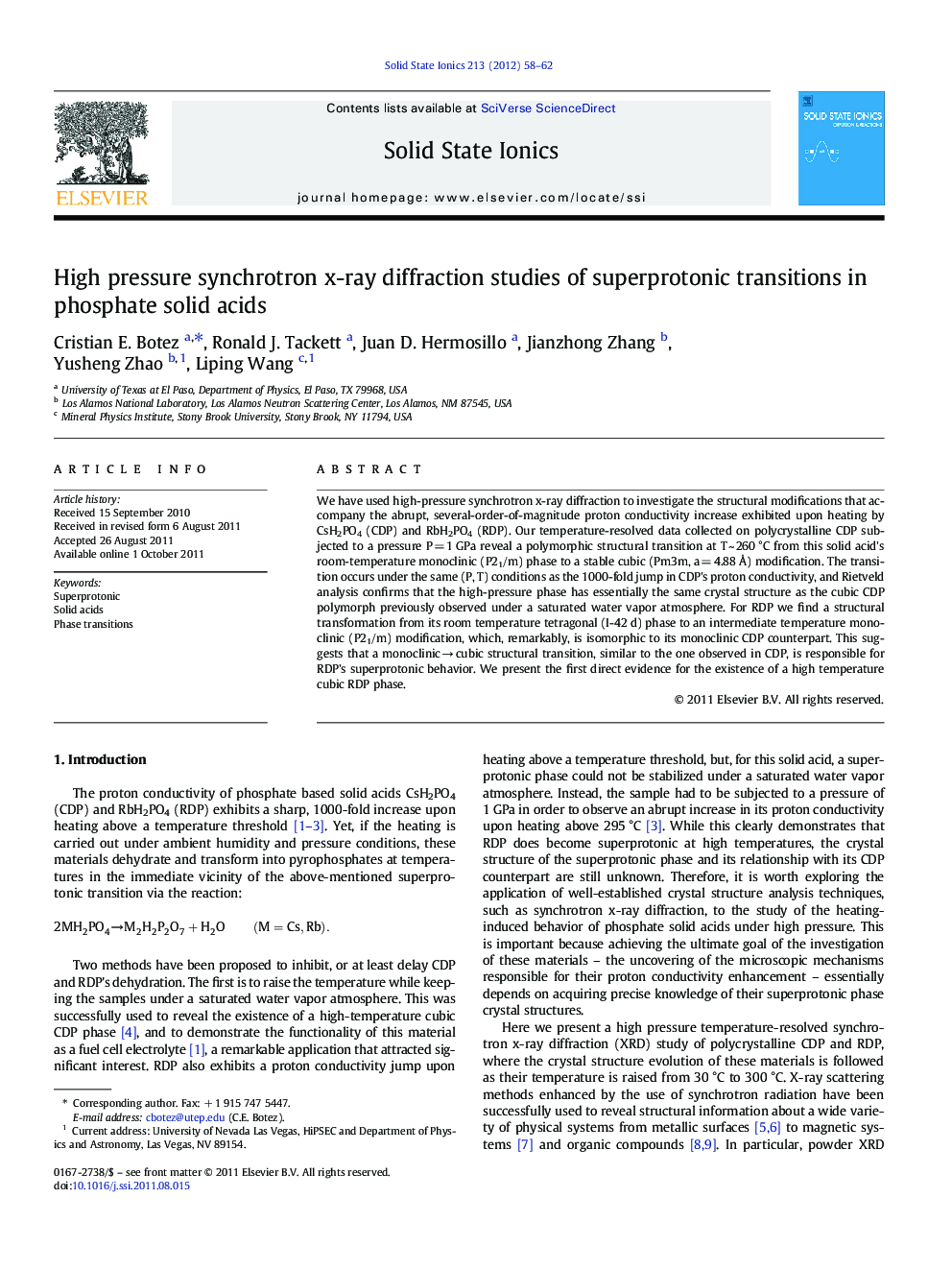| Article ID | Journal | Published Year | Pages | File Type |
|---|---|---|---|---|
| 1296286 | Solid State Ionics | 2012 | 5 Pages |
We have used high-pressure synchrotron x-ray diffraction to investigate the structural modifications that accompany the abrupt, several-order-of-magnitude proton conductivity increase exhibited upon heating by CsH2PO4 (CDP) and RbH2PO4 (RDP). Our temperature-resolved data collected on polycrystalline CDP subjected to a pressure P = 1 GPa reveal a polymorphic structural transition at T ~ 260 °C from this solid acid's room-temperature monoclinic (P21/m) phase to a stable cubic (Pm3m, a = 4.88 Å) modification. The transition occurs under the same (P, T) conditions as the 1000-fold jump in CDP's proton conductivity, and Rietveld analysis confirms that the high-pressure phase has essentially the same crystal structure as the cubic CDP polymorph previously observed under a saturated water vapor atmosphere. For RDP we find a structural transformation from its room temperature tetragonal (I-42 d) phase to an intermediate temperature monoclinic (P21/m) modification, which, remarkably, is isomorphic to its monoclinic CDP counterpart. This suggests that a monoclinic → cubic structural transition, similar to the one observed in CDP, is responsible for RDP's superprotonic behavior. We present the first direct evidence for the existence of a high temperature cubic RDP phase.
